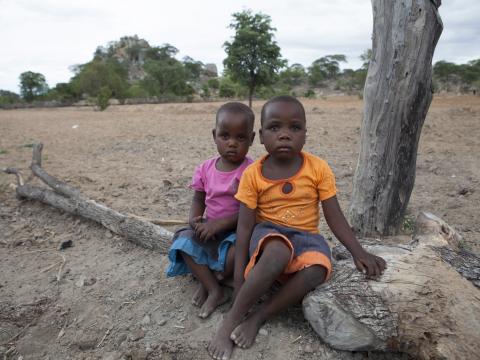Despite progress on child survival MDGs, unacceptable “health gaps” leave millions of children out

World Vision reaction to UNICEF Child Survival report
World Vision report says millions of children are being denied the benefits of progress, despite the fact UNICEF is reporting child mortality rates have been almost cut in half, to 6.6 million per year, since 1990, because many countries have unacceptable “health gaps”. According to the report titled, “Killer Gap: a global index of health inequality for children” a huge gap in health services still impacts survival of millions of children under the age of five.
“In achieving this and tackling global poverty and poor health, governments and organisations have reached those who are easiest to get to, but in many cases this has meant a devastating increase in the gap in access to health care between the health rich and poor, with the most vulnerable children bearing the brunt,” said Charles Badenoch, vice-president of Advocacy and Justice for Children at World Vision. “The aggregated numbers and averages generally used to assess global and national progress in achieving the MDGs have meant that some countries have been able to achieve their targets without addressing the needs of their most vulnerable children.”
Bangladesh and Peru, two of only eight developing countries to achieve the MDG 4 (reduce child deaths by two-thirds by 2015) come in at rank 128 and 98 respectively, pointing to an unacceptably high number of unreached and marginalised children without good access to the health care that brings down mortality rates.
Lack of information is the biggest reason children fall through the cracks. The top three reasons children fall through the cracks are:
- Children not registered at birth are invisible to the system. More than 50% of children under five are unregistered and have no access to health services.
- Refugee children, displaced due to conflict or fragile contexts. About half of the 45.1million people displaced in 2012 are children.
- Children with disabilities are hidden away and denied health access in some communities because of shame and fear of social stigma.
- Other children in the gap are vulnerable to child labour or trafficking, orphans and children who lose their mothers at childbirth.
The agency cites Somalia as a glaring example of the effects of the lack of information. There was not even enough data from the struggling nation to rank it in the health equity index, yet we know from UNICEF’s report that its children continue to face a one in seven chance of dying before they reach their fifth birthday.
“We agree with UNICEF that accelerated action on MDGs is needed to reach these missing millions, but we think that with just over 800 days left to achieve the MDGs, governments should ensure that attention is given at the highest political level to close the health gap for women and children,” says Badenoch, “Information is power, so we’re asking governments to prioritise and invest in data collection systems that bring left out and vulnerable populations, especially women and children into the health network.”
With two years until the deadline for the Millennium Development Goals, World Vision is using UNICEF’s report as well as their own, to urge governments to finish the job and take every step possible to close the health gap in their countries. Looking ahead to the post-2015 development goals, the agency is calling on leaders to prioritise child and maternal health by including ambitious and visionary goals to end preventable child and maternal deaths and significantly reduce stunting.
- The Global Health Gap Index, in World Vision’s The Killer Gap report, ranks 176 countries based on four criteria measuring health outcomes. Read it here.
- World Vision held a week of mobilisation – “Close the Gap” – in 52 countries, with public events to call on leaders to help close the health gap. Find out more.
- Close the Gap is part of World Vision’s five-year Child Health Now campaign, aiming to end preventable child deaths.